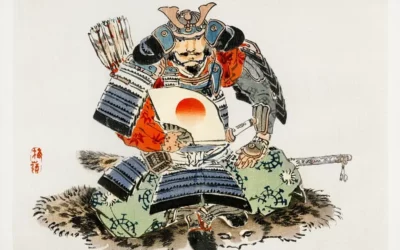Shamisen: The Soulful Storyteller
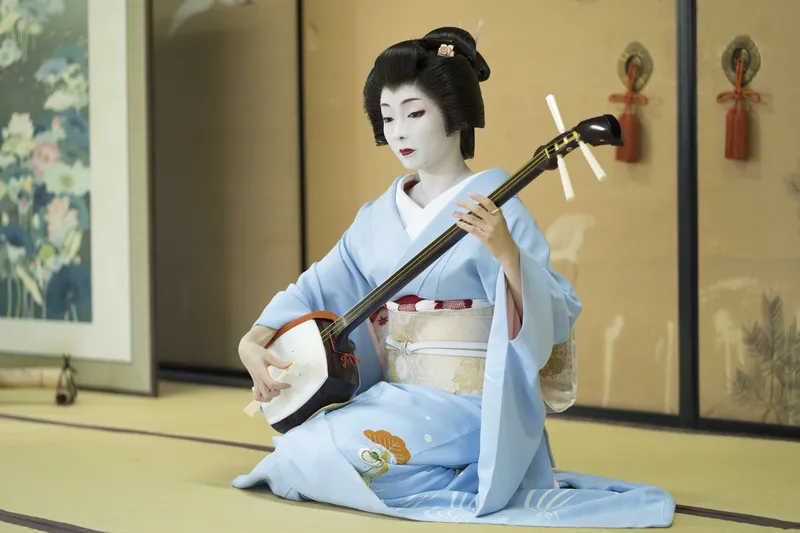
Behold the Shamisen, a cherished stringed instrument whose three strings vibrate with tales of ancient Japan. Called the heart of traditional music, it emerged in the 15th century, influenced by China’s Sanxian. This masterpiece of craftsmanship, with its fretless neck, requires great skill for its range of emotions, from melancholic tunes to lively beats. Central to various Japanese art forms like Kabuki and folk music, the Shamisen weaves captivating stories through time. This traditional musical instrument has even made its mark in Western works, showcasing its adaptability and heralding a new era in performance art. This string instrument is also revered in the realm of Japanese traditional theater, it resonates with a timbre that has captivated audiences for centuries, transcending the barriers of time and culture.
Koto: The National Echo
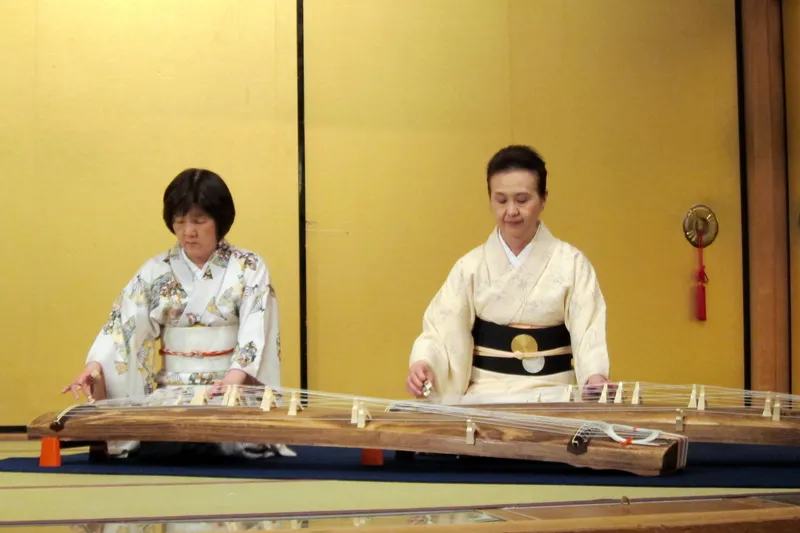
The Koto, a stringedinstrument boasting 13 strings over movable bridges, is both a visual and auditory marvel. Crafted from revered Kiri wood, with roots in the Chinese Guzheng, the Koto stands out in Japanese instruments. Its sound paints auditory landscapes, from serene scenes to grand vistas, embodying Japanese aesthetic values. Known for its calming play, it’s often used in Gagaku, Japan’s ancient court music, and has been a cornerstone of Japanese performances for years. In traditional Japanese music, it has also found its place in contemporary compositions, blending the old with the new in harmonious symphony
Kokyu: The Unique Voice

The Kokyu, often overshadowed by more famous counterparts, is a hidden gem among Japanese instruments. Resembling the Shamisen but unique with its bow, it’s the only traditional Japanese stringed instrument played in this manner. Its poignant melodies capture the quintessential Japanese spirit, showcasing the nation’s talent for creating unique musical instruments. With its delicate string sounds, it is also an instrument often used by Buddhist monks in their meditative practices, linking spiritual contemplation with musical artistry.
Biwa: The Lute of Legends
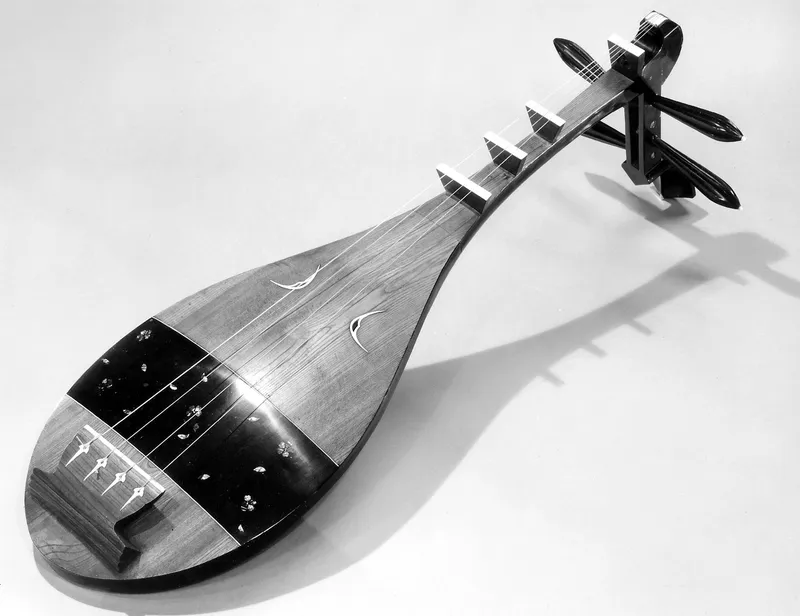
Next, we encounter the Biwa, akin to the lute and steeped in historical significance. This stringed instrument, whether unfretted or fretted, offers a broad, emotional range. Traditionally, it has been the voice of epic tales, its strings accompanying stories of heroes and myths. The Biwa’s sound, often used in traditional performances, touches the soul, securing its place in Japanese music. In addition to its role in narrating legendary tales, the Biwa also features prominently in Kagura performances, a form of Shinto theatrical dance that dates back to Japanese court music
Sanshin: The Island’s Melody
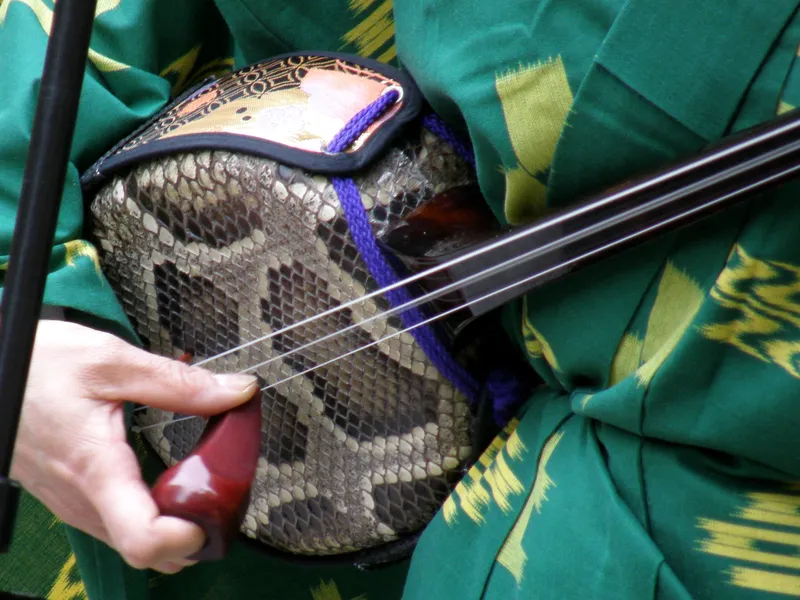
From Okinawa’s shores comes the Sanshin, a stringed instrument embodying the island’s distinct cultural rhythm. Originating from the Chinese Sanxian, the Sanshin’s melodies, closely linked with Okinawa’s history and lifestyle, set it apart from mainland Japan’s style. More than an instrument, it’s a storyteller of island life, capturing the essence of sea and sky. The Sanshin, while predominantly associated with the island melodies of Okinawa, also finds its echoes in the traditional Japanese music played during the New Year and other festive celebrations across Japan.
Taiko: The Heartbeat of Japan
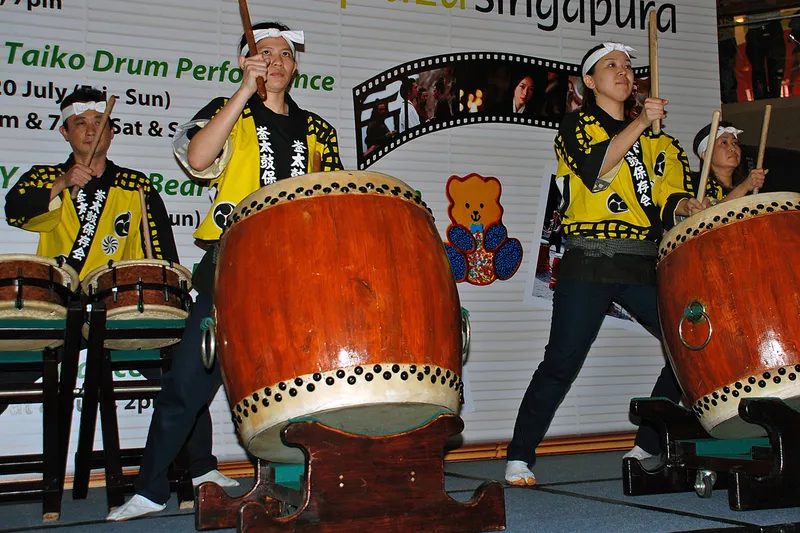
Envision the Taiko, not just a drum but Japan’s heartbeat. These drums, rooted in the Jomon period, resonate with a history as deep as the nation itself. Used in battle, religious ceremonies, and festivals, the Taiko’s deep, thundering rhythms, echoing through years, are a testament to its lasting legacy. Not just percussion, it’s a narrative of strength, unity, and transcendence, a vibrant symbol of Japan’s cultural pulse. While the Taiko is not a string instrument, its thunderous beats are often complemented by the softer, melodic strings of instruments like the Koto and Shamisen, creating a dynamic interplay in traditional Japanese music.
Shakuhachi: The Bamboo Whisperer
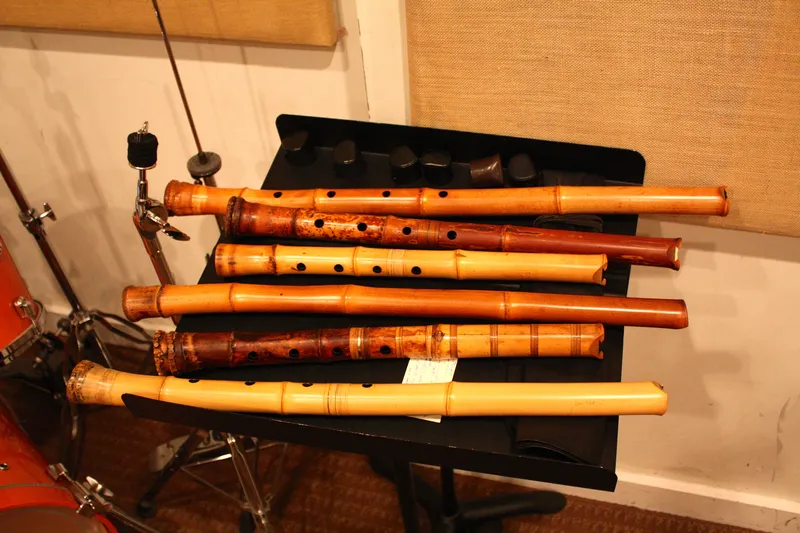
Step into the ethereal realm of the Shakuhachi, a musical instrument where each note tells a tale of Zen and tranquility. Brought from China in the 7th century, this bamboo flute evolved from a courtly instrument to a spiritual tool for Zen monks. Its haunting melodies aren’t just music; they’re meditations, conjuring images of misty mountains and peaceful Zen gardens. The Shakuhachi isn’t just played; it’s an odyssey into the soul, a balance between silence and sound. Though primarily a wind instrument, it is frequently paired with string instruments in Buddhist ceremonies, creating a harmonious blend that captures the essence of spiritual tranquility.
Naruko: The Clapping Charm

In the rhythmic claps of the Naruko, hear Japan’s agricultural past and festive spirit. Initially a tool for scaring birds, the Naruko has become a key instrument in the lively Yosakoi Dance Festival. Its cheerful clapping, alongside vibrant dancers, bridges Japan’s rustic beginnings with its spirited present. The Naruko, more than a musical instrument, is a celebration of life, embodying community joy and tradition. While the Naruko and Kane are percussive in nature, their rhythmic patterns are often interwoven with the strings of other traditional Japanese instruments, creating a rich tapestry of sound that celebrates Japan’s musical heritage
Kane: The Sacred Chime
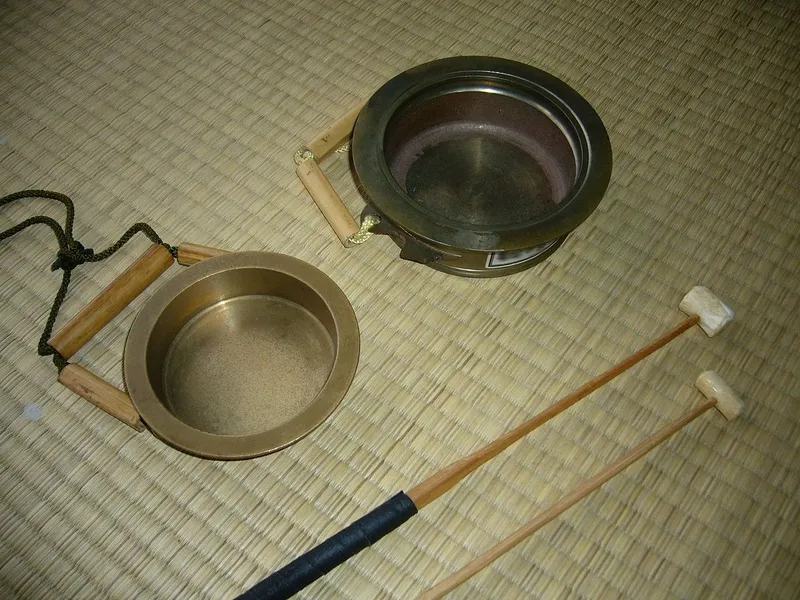
Finally, the Kane – a small, brass bell with a sound far from ordinary. In its clear chime, hear the sacred echoes of Japanese rituals and festivals. Its ringing demands attention, a call for introspection in a constantly moving world. Each chime tells a story of reverence, connecting us to Japan’s spiritual tapestry.
images credit:









